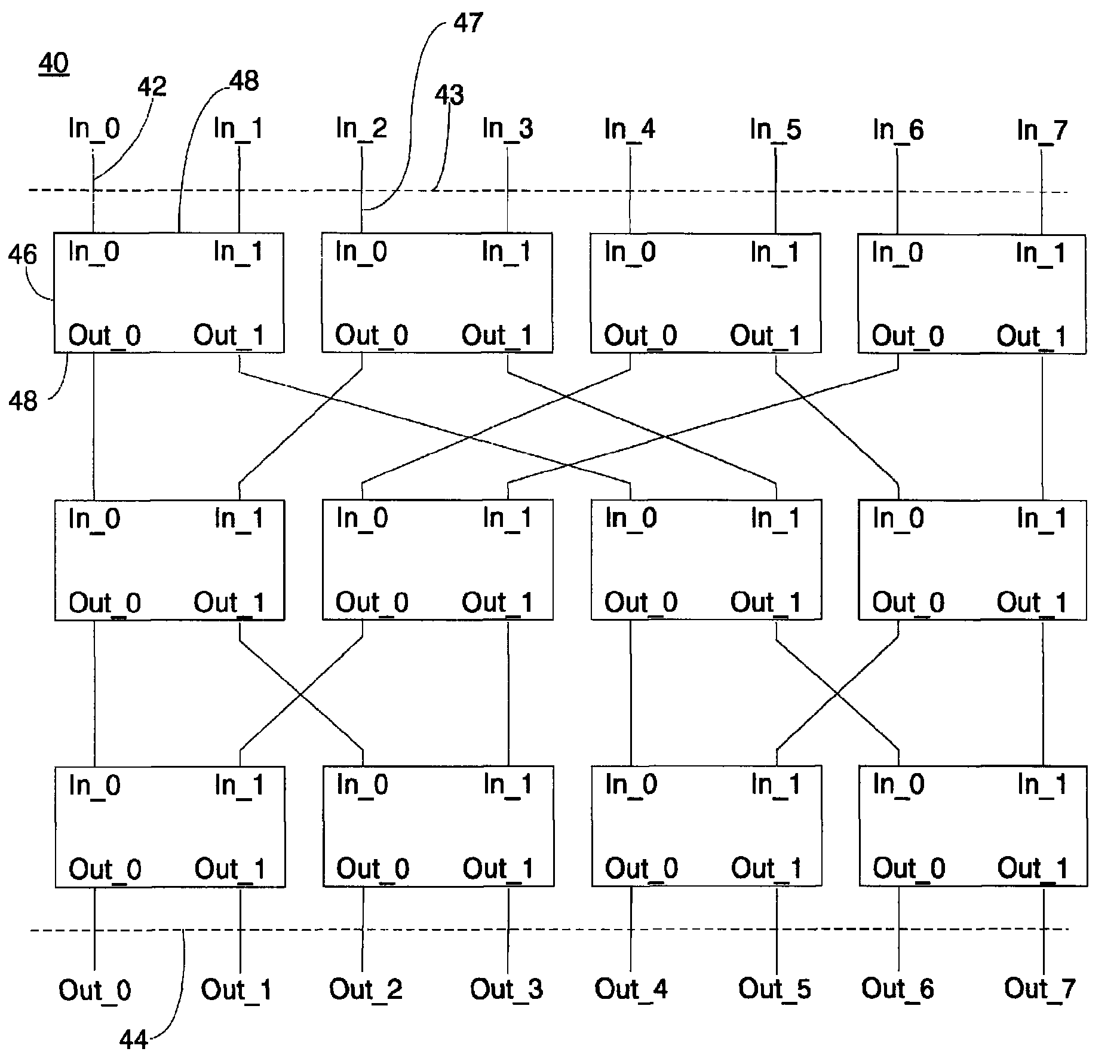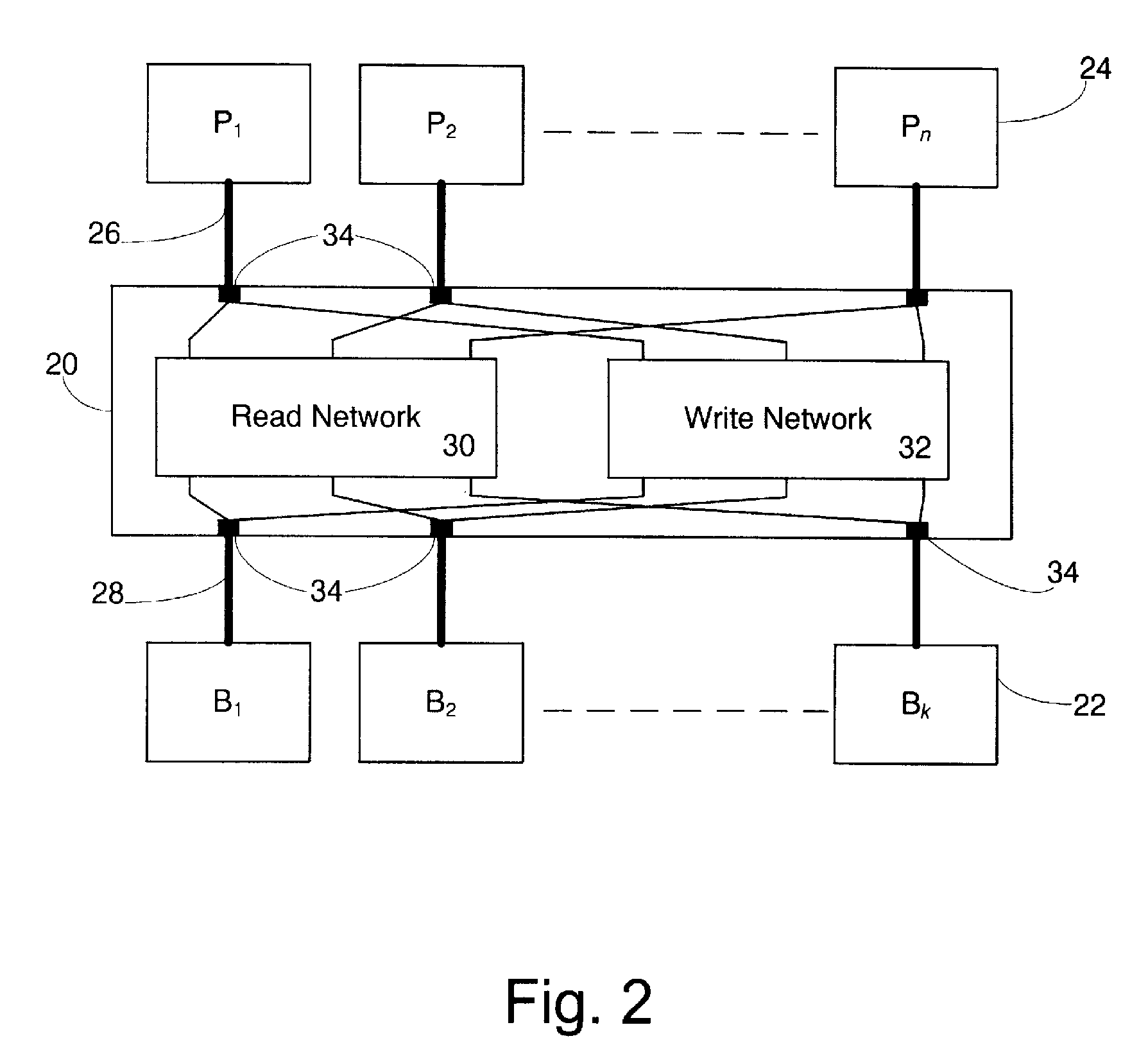Shared memory system for a tightly-coupled multiprocessor
a multi-processor, shared memory technology, applied in the direction of electric digital data processing, instruments, data conversion, etc., can solve the problems of not being able to support the bandwidth demands of a larger number of processors, and the memory system is conceived as a complicated and cumbersome apparatus, and achieves efficient and simple operation. , the effect of more lean and simpl
- Summary
- Abstract
- Description
- Claims
- Application Information
AI Technical Summary
Benefits of technology
Problems solved by technology
Method used
Image
Examples
Embodiment Construction
[0054]In the following description, in order to present preferred embodiments of a shared memory system for a tightly-coupled multiprocessor in accordance with the principles of the present invention, first the topology of the interconnection network is described. Thereafter, the timing regime of the memory system is described. Then the paths that are formed between processing cores and memory banks are described.
The Topology of the Interconnection Network
[0055]FIG. 1 shows a generalized example of a prior art shared memory system comprising an interconnection network and memory banks connected, to multiple processor cores.
[0056]As stated in the section “Background of the Invention” heretofore, the interconnection network 20 of FIG. 1 is conceived to be a complicated and cumbersome apparatus, which cannot provide bandwidth high enough and at the same time abide by latencies low enough so as to allow access to random addresses with efficiency comparable to that of a local memory.
[005...
PUM
 Login to View More
Login to View More Abstract
Description
Claims
Application Information
 Login to View More
Login to View More - R&D
- Intellectual Property
- Life Sciences
- Materials
- Tech Scout
- Unparalleled Data Quality
- Higher Quality Content
- 60% Fewer Hallucinations
Browse by: Latest US Patents, China's latest patents, Technical Efficacy Thesaurus, Application Domain, Technology Topic, Popular Technical Reports.
© 2025 PatSnap. All rights reserved.Legal|Privacy policy|Modern Slavery Act Transparency Statement|Sitemap|About US| Contact US: help@patsnap.com



